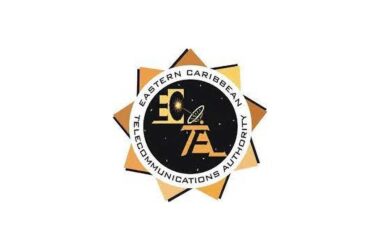The Government of Saint Lucia has sourced just over half a billion Eastern Caribbean dollars for the planned redevelopment of the Hewanorra International Airport, a debt that is a charge on the Consolidated Fund.
That money, which will be coming from a syndicate of banks and the Exim Bank of Taiwan, has been a source of contention between the government and the opposition Saint Lucia Labour Party.
The airport project is currently the largest infrastructural project to be undertaken on the island; however it could be dwarfed by the Pearl of Caribbean project (US$2.6 billion) to be undertaken by the company called Desert Star Holdings (DSH) Limited. To date only phase one of that project has materialized, which is the horse racing track at Beausejour, Vieux Fort which is set to open with a US$20,000 thoroughbred horse race on 13 December of this year.
The airport redevelopment project had stirred up controversy between the government and the opposition Saint Lucia Labour Party with neither side budging from their respective positions about how that project should be financed. The opposition is in support of a public-private partnership initiative, arguing that this is the best way forward as it would free Saint Lucia from bearing an unnecessary financial burden. The government, on the other hand, is in support of borrowing the money for the airport’s redevelopment.
“We are very strong in our conviction that that is borrowing that will cloud the fiscal space and is borrowing that could be avoided…” said Philip J Pierre at last month’s House of Assembly meeting.
The opposition claimed that when it was in office it had developed an extensive plan for the airport’s reconstruction based on the PPP model and argued that this was the model most countries around the world were employing when constructing their airports.
The opposition contends that it would give a company with the financing and expertise on airport building the contract to build and manage the Hewanorra Airport for 30 years after which the airport would be handed over to the to the government and people of Saint Lucia.
That company would have to maintain the infrastructure and deal with all associated risks for 30 years. The opposition further claimed that after 30 years Saint Lucia would receive an airport without having paid a single dollar.
The opposition questioned the government’s rationale that the airport tax levied on aircraft passengers would pay the loans taken to build the airport claiming that government’s dependence on the tax is illogical in that the sum total collected from the tax each year may vary considerably depending on several factors, natural or manmade included, thereby forcing Saint Lucians to pay for something they should not have paid for.
The government is steadfast in its belief that the reconstruction of the airport by way of borrowing is the better option claiming that it would be better for the country to be in control of the airport’s expenses and its profits and not leave that in the hands of a third party for 30 or more years.
Prime Minister Allen Chastanet, last month on a motion to borrow money for the airport redevelopment project presented a scenario to the House of Assembly saying that should government go the way of the opposition in putting a company in charge of the airport, that company would have collected EC$1.9 billion in 30 years. He then went on to correct that figure.
Chastanet further noted that with a growing tourism industry of one and a half percent for the last 40 years and a larger airport with greater capacity, arrivals would no longer be at the 400,000 annual mark but rather would be averaging at a minimum 500,000. He surmised that should government go the way of the opposition the company managing the airport would be collecting billions of dollars in 30 years, money Saint Lucia would be losing.
Chastanet explained that the cost associated with the construction of a new terminal would be US$120 million, money which does not include construction of a new traffic control tower, a new taxiway, the resurfacing of the runway and a proper flood mitigation investment.
“When you add the air traffic control, the resurfacing of the runway and the new taxiway… the entire amount comes to around US$200 million. So, the point is where is this money going to miraculously come from?” Chastanet asked.
The government has taken a loan of US$100 million from the Exim Bank (Republic of China), which Chastanet said has a moratorium of five years. He said the principal on this loan would be paid with the current US$35 airport tax times 400,000 arrivals times the five-year moratorium, which equals US$70,000,000. He said there was a moratorium on both loans before the house for five years.
The Prime Minister speculated that the loan from Taiwan could be paid off in 11 years if visitor arrivals at the airport averaged 500,000; the revenue generated after would be debt free.
Chastanet, who is also the country’s finance minister, went to parliament last month seeking a resolution authorizing him to guarantee borrowing by the Saint Lucia Air and Sea Ports Authority from a syndicate of banks led by the Bank of Saint Lucia to finance the Hewanorra International Airport Redevelopment Project.
The syndicate of banks are Bank of Saint Lucia Limited EC$58, 900, 000; 1st National Bank Limited EC$54,500,000; Grenada Co-operative Bank Limited EC$40,100,000; Antigua Commercial Bank Limited EC$24, 500,000 and the Eastern Caribbean Amalgamated Bank EC$24,500,000.
This EC$202.5 million from the syndicate of banks is payable over a period of 20 years inclusive of a grace period of five years on the principal payments with interest only paid.
Statutory instrument No. 124 of 2019 published 2nd September, 2019 in the Saint Lucia Gazette stated that a guarantee involving a financial liability is not binding on government unless the Minister for Finance grants the guarantee in accordance with an enactment or with the prior approval of Parliament by a resolution of Parliament.
It went on as follows, “And whereas it is further provided under section 42 of the Finance (Administration) Act, Cap. 15.01 that any obligation arising from a guarantee given in accordance with section 41 is a debt charge and all debt charges for which the government is liable shall be charged on and paid out of the Consolidated Fund.”














